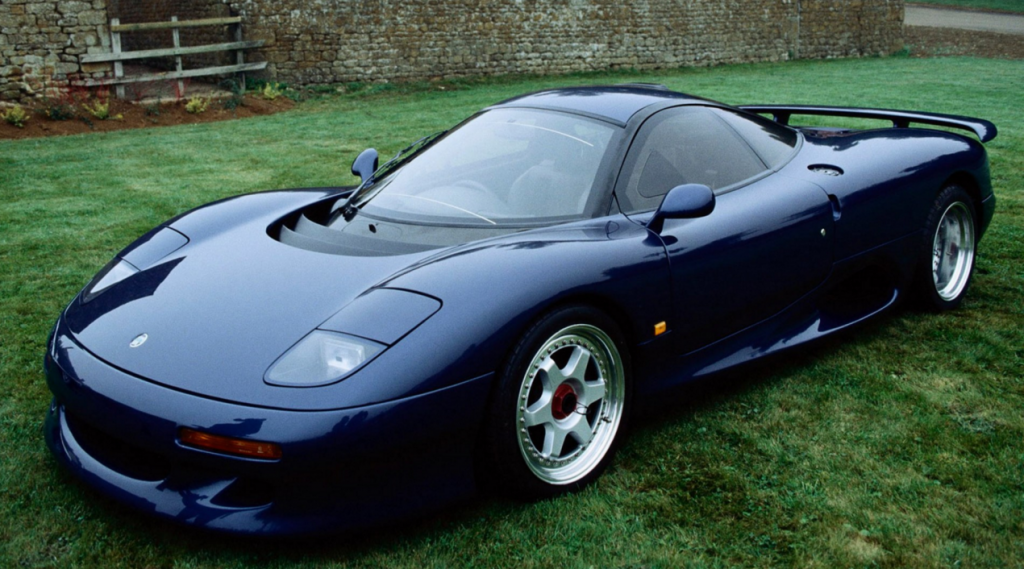Inspired by the outright victory in the 24 Hours of Le Mans in 1988, Jaguar and TWR (Tom Walkinshaw Racing) formed a joint-venture, JaguarSport, decided to develop a racing car for the road. It was derived directly from the successful XJR-9 and XJR-12 racers. The XJR-15, the nomenclature, XJR, related the car to Jaguar’s Group C competition cars.
Silverstone was always the spiritual home of the XJR-15. The cars were produced locally in Bloxham by JaguarSport the official public launch was also staged at the circuit.
It was the first road-going car built entirely of carbon and Kevlar composites before the McLaren F1 used similar construction techniques in 1992.
In 1991 Jaguar launched road-going XJ220. They also formed a one-marque racing series, the Jaguar Intercontinental Challenge, run as support for F1 racing and open to all owners of an XJR-15 at Monaco, Silverstone and Spa. The prize, settled by the victory at Spa, of $1 million, with no second prize. Armin Hahne, a German racing driver, won the race.
Hailed by some as the ultimate one-make race series and dismissed by others as an £8m banger race, the 1991 Jaguar Intercontinental Challenge was one of the greatest motorsports spectacles ever conceived.
Sadly, the racing governing body cancelled the Jaguar Intercontinental Challenge after only the three races.
The original plan was to build 50 cars. Several high profile individuals bought an XJR-15, including several race car drivers, Matt Aitken, the songwriter and the Sultan of Brunei.
The XJR-15, powered by a 6-litre Jaguar engine, was available with either a five-speed manual gearbox or a TWR six-speed automatic gearbox. The automatic gearbox was initially designed for Le Mans, although never utilised. There were also five seven-litre examples built for the Japanese market.
At Silverstone, a special track tribute 30 July – 1 August 2021 celebrated the 30th anniversary of the Jaguar XJR-15.

